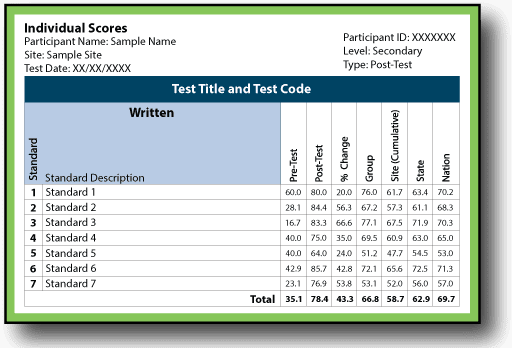Data is a critical part of instructional improvement and can be particularly helpful to CTE programs in making data-driven decisions that support learning and program improvement. Collecting and analyzing data helps educators pinpoint potential problems at the student, curriculum, and instructional levels.
Educators know data is important, but challenges still exist when using data for instructional improvement. How do educators know what data to collect or how to parse inconsistencies in data provided by various credentialing organizations? And once they have the data, how does one begin using it for instructional improvement?
Here are three ways to start putting your data to work with a focus on improving your credentialing program.
1. Know What Data is Useful
Thanks to digital solutions and the connectivity of the internet, educators have more data available to them than ever before. However, simply because data is available does not automatically make it useful for instructional improvement. When it comes to credentialing assessments, data should meet at least one of the following criteria:
- Align with national, industry-based standards
- Can be disaggregated by class, student, and demographic categories required for federal reporting
- Can obtain results more than once during the school year (preferably at the beginning and toward the end), giving you two sets of data on the same students
- Breaks down into granular reports that include subpart scores for major categories within an occupation
We recommend taking an inventory of accessible data to help your team easily access the raw material that will fuel your action plan. As you list out the sources of data, also note how the various types of data intersect with one another to reveal trends.
2. Learn How to Spot Patterns
Successful data analysis will depend on your ability to observe patterns and understand how those patterns indicate what needs to change. One of the most useful ways to analyze data is comparatively.
For example, how did this year’s scores compare to last year’s? How did a particular group of students compare to state and national averages? How did a particular student do in relation to the rest of the group? Did their scores change between the pre-test and post-test according to the data?
This analysis should be detailed enough to focus on specific technical or academic skills where a student may need additional instruction. The more granular the data, the more precise your analysis can be, the more likely it will yield valuable insights. Use larger data sets like state and national averages to set benchmarks for students and for the overall program. In some cases, your state or school district may have pre-established benchmarks.
In the individual report sample below, we can easily see the percent of change between the student’s pre-test and post-test scores, indicating how much they improved since taking the pre-test. Additionally, we can compare their scores to the group, site, state, and national averages. For this particular student, we can see they improved in every single standard and scored above the state and national averages. However, the group scores for standards 2, 5, and 7 are below the national average and instructors may wish to consider investigating further.

Various techniques and methods for data analysis can be incorporated into professional development for teachers and administrators.
3. Use Data for Program Improvement
Data can be used by teachers to improve instruction for individual students or by administrators to guide teachers in improving the curriculum or instructional strategies.
In the book Putting Your Data to Work, John Foster, Carol Hodes, and Sandy Pritz point out the need for a system to help educators consistently use data for program improvement. The five-step model used in the book is designed to help educators develop an in-depth understanding of their school’s data and enable them to use the data to improve instruction and learning. The model is intended to be an ongoing cycle and the steps listed below should repeat.
- Collect Data
- Analyze Data
- Verify & Triangulate
- Design Action Plan
- Implement Plan & Review Outcomes
Points to Consider for Teachers
Data gives you more in-depth information than a simple pass/fail. Analyzing data and looking for patterns helps you understand the “why” behind a student’s score and provides insight for clues to help improve your pass rate.
- Look at comparative data broken out by standards and competencies
- Look at scores available by individual student and by class
- Look for data broken down by specific competencies to help you spot trends and patterns
Points to Consider for Administrators
Administrators should remember that a single assessment score is influenced by many factors. One score should not be used for a high-stakes decision. Get more context for your puzzle by putting your various data pieces together. The process of triangulation uses at least three types of data from different sources to confirm what the credentialing assessment is telling us.
Below are possible changes based on data:
- Modify curriculum, the order of topics, or length of instruction
- Add curricular reinforcement activities
- Update or add equipment
- Reinforce academic concepts
Put Your Data to Work with NOCTI
NOCTI provides support and resources for those looking to use their data for program improvement. From tips on using study guides to professional development workshops, we provide teachers and administrators the tools to make decisions with confidence to improve student success.
Here are some additional resources in which you may be interested in:
- Putting Your Data to Work. This book explores the various aspects of data-driven instruction with how-to examples and tips for all CTE professionals.
- Connecting Data to CTE Program Improvement. Learn more about how data connects to CTE program improvement and helps equip future workforces for success.
- Professional Development Workshops. The NOCTI team is available for onsite or virtual workshops. Workshops include opportunities for participants to network with peers and practice strategies learned in the sessions.
